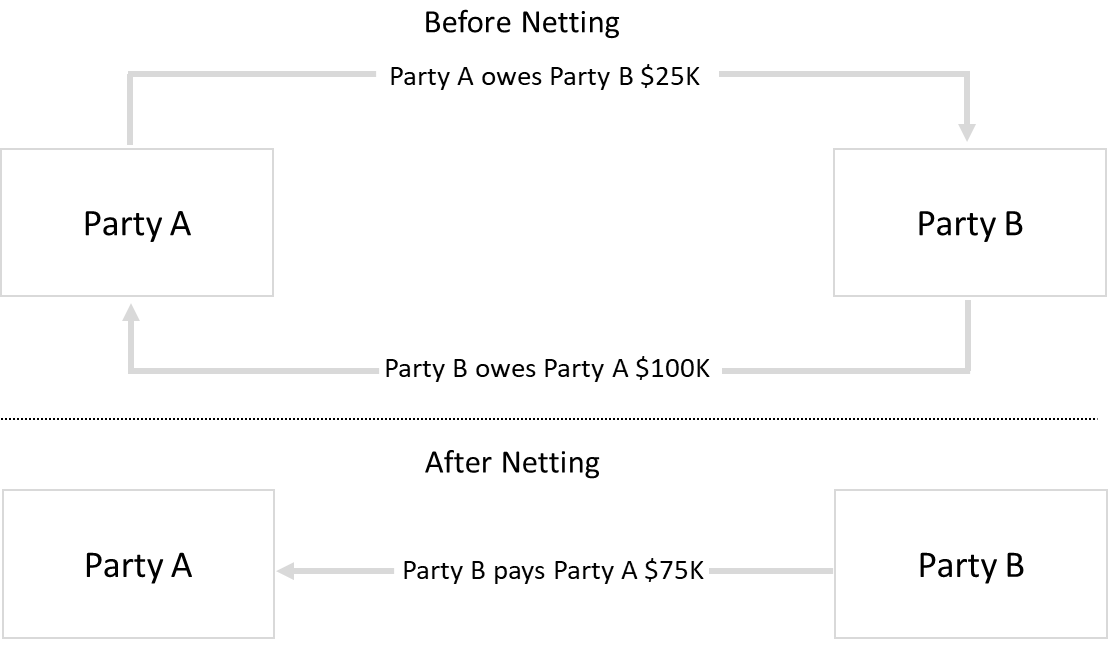1. Definition
A method of reducing credit, settlement and other risks of financial contracts by aggregating (combining) two or more obligations to achieve a reduced net obligation.
2. Benefits
Reduction of
- Credit Risk
- Settlement Risk
- Liquidity risk
- Systemic risk
and evaluation of the ability of a lender or creditor to seize and liquidate collateral in the event of default by the borrower.
3. Requirements
According to regulatory requirements, financial institutions have to allocate a certain percentage of shareholders' equity for credit risk resulting from derivatives positions. This significantly reduces the capital available for other business opportunities and imposes a high cost of capital. Further, both regulated and non-regulated financial institutions are interested in minimizing collateral provisions.
Credit risk and collateral provisions can significantly be reduced by way of master agreements featuring netting. The risk-reducing quality of such netting agreements needs to be evaluated based on legal opinions or regulatory requirements.
Furthermore, each transaction to be included in netting has to be confirmed with correct reference to the governing master agreement.
4. Solution
Framesoft's Netting Engine is focused on reducing counterparty credit risk and minimizing collateral provisions. The netting engine references to the following Framesoft solutions:
which serves as the central data repository for contract, counterparty and product data and
which automates the process of generating trade confirmations including correct references to master agreements
The applications provide dynamically configurable functionality and data structures which can easily be adapted to meet new or changing business or regulatory requirements.
Framesoft's Netting Analyser offers the opportunity of real-time netting evaluations (and its reasons) of agreements documented in Framesoft Contract Repository (FCR).
Contact us at

